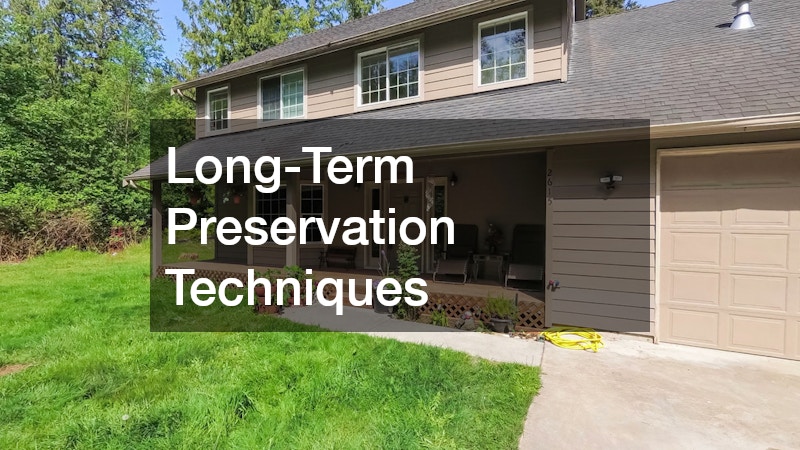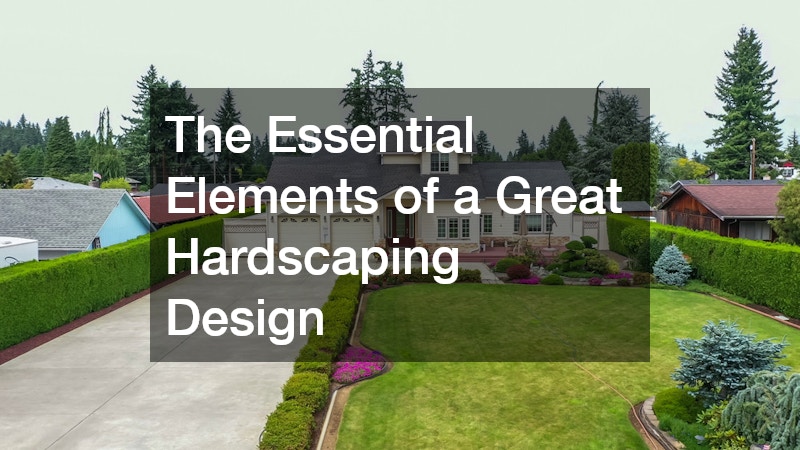Hardscaping design refers to the non-living components of landscaping, offering structure and definition to outdoor spaces. Unlike softscaping, which involves plants and horticulture, hardscaping focuses on elements such as pathways, patios, and walls. This aspect of landscaping is vital as it defines functionality, improves aesthetics, and adds value to residential and commercial properties.
The Basic Components of Hardscaping
Types of Materials Used
Hardscaping materials are diverse, each with unique benefits and aesthetic appeal. Common materials include pavers, which are durable and come in various styles, and concrete, known for its versatility and cost-effectiveness. Natural elements like stone and wood offer rustic charm and can blend seamlessly with surrounding vegetation and architecture.
The choice of material can significantly impact the overall design and functionality of a hardscaped area. For example, permeable pavers allow water to seep through, reducing runoff and promoting eco-friendliness. Selecting the right material involves considering factors like climate, budget, and intended use of the space.
Additionally, incorporating a mix of materials can create a dynamic and visually interesting design. This approach allows for creativity while addressing specific needs and site conditions. Combining stone pathways with wooden decks, for instance, integrates natural textures, enhancing the ambiance of any outdoor setting.
Key Structural Elements
Foundational elements in hardscaping design, such as patios, walkways, walls, and decks, play a crucial role in enhancing outdoor functionality and aesthetics. Patios provide excellent social spaces for entertaining and relaxing, typically constructed using durable materials like concrete or stone. Walkways offer practical navigation through gardens and lawns, contributing to safety and directional flow.
Walls in hardscaping serve multiple purposes beyond aesthetics; they can define spaces, provide privacy, and help manage changes in terrain. Retaining walls are functional for controlling erosion, while decorative walls add elegance and style. When integrating walls into a design, it is vital to consider factors like height, material, and placement for optimal impact.
Decks expand living spaces outdoors, offering places for activities such as dining, lounging, and hosting gatherings. Built with materials like wood or composite, decks should harmonize with the surrounding environment and architecture of any structures. The orientation, size, and style of a deck can significantly influence both its functional and aesthetic outcomes.
Planning and Designing a Hardscape
Developing a Design Concept
The initial phase of hardscape design involves brainstorming to align with both the homeowner’s vision and the existing landscape. It’s essential to consider factors like the overall theme, desired functionality, and maintenance requirements. Professional guidance, along with digital modeling tools, can help evolve vague ideas into concrete concepts, ensuring a cohesive design plan.
Incorporating the environment’s natural characteristics, such as elevations and vegetation, is critical in developing a harmonious design concept. Sustainable design considerations, like energy efficiency and environmental impact, should also guide initial planning. Ultimately, a well-conceived design fits seamlessly into its context while satisfying practical and aesthetic needs.
Creating a Layout and Blueprint
The creation of a layout and blueprint is a meticulous process that transforms a design concept into a workable plan. Scale, balance, and proportion are essential considerations, guiding the distribution of space for maximum functionality and beauty. Using tools like CAD software enables precise measurements and efficient resource planning, eliminating potential issues later.
Layouts should incorporate all elements of the design, detailing material specifications, dimensions, and installation techniques. Considerations like sunlight exposure, wind patterns, and water drainage can significantly influence the effectiveness of the design. By visualizing potential outcomes, adjustments to the layout can be made efficiently, ensuring a polished finished product.
Maintaining a Hardscape Effectively
Regular Maintenance Practices
Regular maintenance is vital to preserve the aesthetic and functional integrity of hardscape features. Cleaning hard surfaces to remove dirt, debris, and stains not only improves appearance but also prevents long-term damage. Sealing materials like concrete and stone offer protection against the elements, reducing deterioration and extending their lifespan.
Weed control is essential in maintaining clean and clear hardscape surfaces, helping to eliminate unsightly growths that can cause structural issues. Pressure washing is an effective technique to restore surfaces, enhancing both function and appearance. Routine inspections allow the early detection of potential problems, facilitating timely interventions to prevent more significant damage.
Long-Term Preservation Techniques
Strategies for long-term care focus on managing wear and tear, ensuring the durability of hardscape features. Applying sealant to protect surfaces from water infiltration, freeze-thaw cycles, and UV exposure is crucial for stone and concrete elements. Wood surfaces require periodic staining or painting to safeguard against weather damage, pests, and rot.
Repair techniques like re-leveling pavers, patching cracks, and replacing damaged components are integral to maintaining structural soundness. Addressing small issues early prevents more extensive repairs, preserving both beauty and functionality. Regularly updating worn-out elements ensures that the hardscape remains safe, usable, and visually appealing.
Hardscaping design is an essential aspect of landscaping that significantly enhances the functionality, beauty, and value of outdoor spaces. By understanding the basic components, planning thoughtfully, and maintaining diligently, homeowners can achieve lasting, appealing results. A well-executed hardscape reflects careful design and maintenance, delivering long-term satisfaction and enjoyment.

